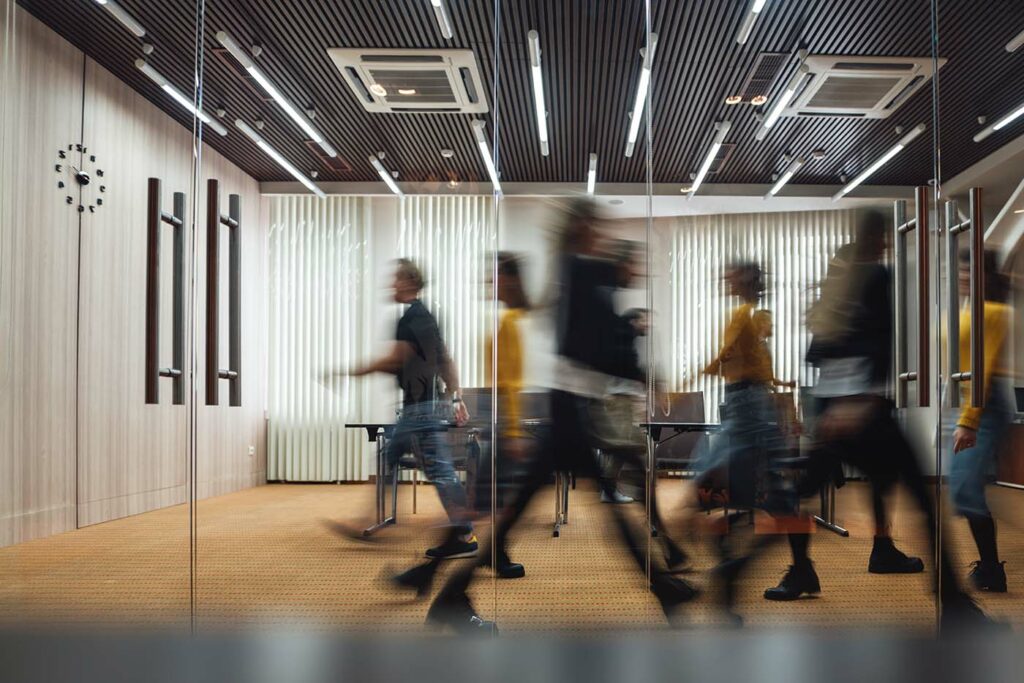The Covid-19 pandemic has turned working practices upside down, in particular by requiring employees in a vast number of sectors to work from home. Is this model likely to stick or will everyone return to the office? Alain d’Iribarne, an economist, specialising in work-related sociology and the chairman of the scientific committee of Actineo, along with Kévin Duchier, HR Director of Germinal, provide some insights.
When the pandemic is finally over, will we be going back to the office like before? According to research* by Actineo, which monitors the quality of life at work, working from home was far from being the rule before the emergence of Covid-19: only 21% of people interviewed said they used to work at home at least one full day a week before the pandemic. By contrast, 83% were doing so in early 2021.
“The impact of the Covid-19 pandemic has revealed the advantages of working from home,” explains Alain d’Iribarne, an economist specialising in work-related sociology, researcher at the French National Centre for Scientific Research (CNRS) and chairman of Actineo’s scientific committee. “But it’s not all sweetness and light. The major inconvenience is the relationship between working individually and collectively. Well-being is negatively affected by the lack of social contact, with people no longer meeting each other in person.”
Getting together again with colleagues — why a return to the office is popular
The same study showed that although 37% of those interviewed wanted to work from home two or three days a week in the future, a return to the office proved popular, as it meant:
- a chance to have some informal, sociable time with work colleagues (41%)
- a workspace that is clearly separate from people’s home life (39%)
- more efficient discussions about work (34%).
“In the next three or four years, major companies should be allowing employees to work from home two or three days a week,” suggests Alain d’Iribarne. “However, during the pandemic, we also saw a need for some people to return to the office. But was that because they could work more effectively as a team, or did it reflect their need to be with other people? These are two different things. Our study showed that people’s relationships with their colleagues are important; it is the social aspect of work. On the other hand, the workplace needs to have more advantages than disadvantages. The benefits should not only include features such as comfort, design and a high-quality setting, but also the behavior of colleagues and managers.”
At Germinal, a wide choice of places to work
For Germinal, there’s no going back. Founded in 2018, this young company – specialised in adaptive learning for early entrepreneurs – was just about to move into new premises in Paris when the Covid-19 crisis arose. Instead, there was a change of heart and the decision was taken to remain at the start-up’s original location. On top of that, it was also decided to give employees considerable freedom in choosing where they wanted to work.
“We all wanted more flexibility,” explains Kévin Duchier, Germinal’s HR Director.
“So, we gave everyone the choice of coming in to the office every day, or going to live somewhere like Dubai. Today, half of our employees live in the Paris region, but they don’t come into the office every day. There are 25 of us in total, but there are only three or four in the Paris office at any one time.”
To avoid going against the wishes of some staff, Kévin Duchier decided to keep the company’s original offices. “The money we saved by not taking the new premises (around €30,000 a month) was devoted to creating times when we could be together.” Along with team video conferences every morning and 15-minute meetings every day at midday, the company organises three-day seminars every three months, along with get-togethers one afternoon a month. These sessions include team-building exercises, discussions about the company’s direction and a programme of fun events. The company also gave each employee a €500 budget to improve their work environment at home, and a further €400 a month to cover working in third places – which is particularly appreciated by some.
Third places: new workplaces that are close to home
“In the years ahead, the use of local third places is bound to increase,” says Alain d’Iribarne. “These spaces will be equipped like offices, located close to where people live, and will provide separation between work life and home life.” In other words, they are gateway locations between the office and home.
“There is a basic human need to connect with other people, but it doesn’t necessarily have to be with work colleagues,” says Kévin Duchier. “It’s very important to meet colleagues in person, but not necessarily every day. In my view, we are going to see co-working spaces where people meet up with others who are working in the same field; a space for people in marketing, another for those in sales… and during that time, there will be an opportunity to learn skills, rather than being the only person in the company doing that job.”
Freedom to choose, a mixture of the office, home and local third places . . . could this be the recipe for a genuine work-life balance? We won’t know until we’ve tried!
* Survey carried out in January and February 2021 among 2,600 employees and self-employed people in five major metropolitan areas (Amsterdam/Rotterdam/The Hague, London and Paris in Europe, Singapore in Asia and San Francisco/Seattle in the US).
